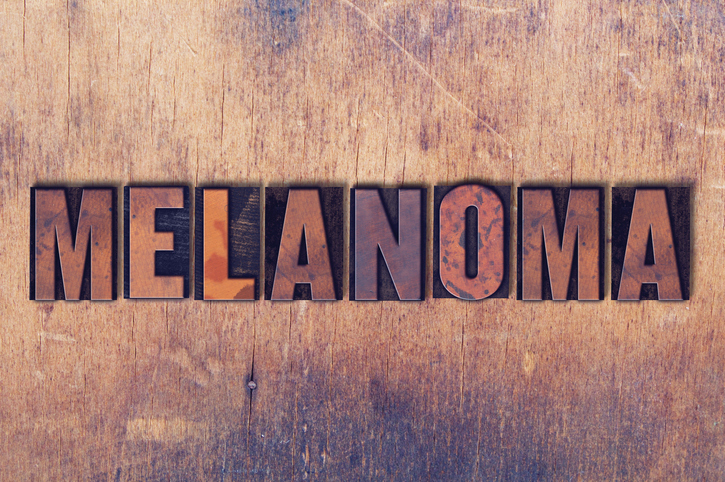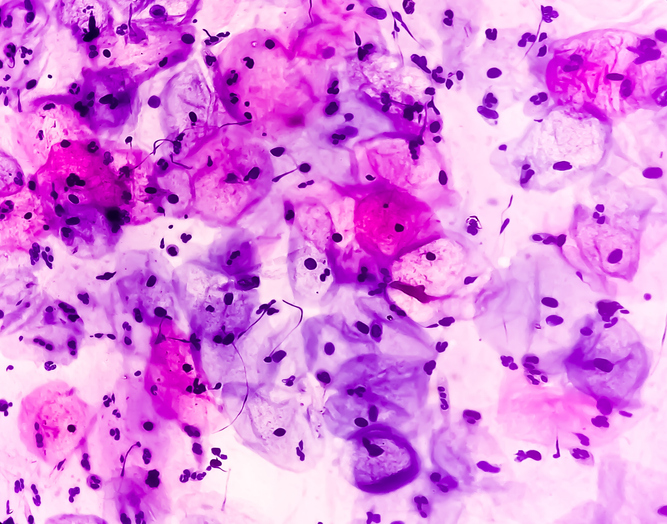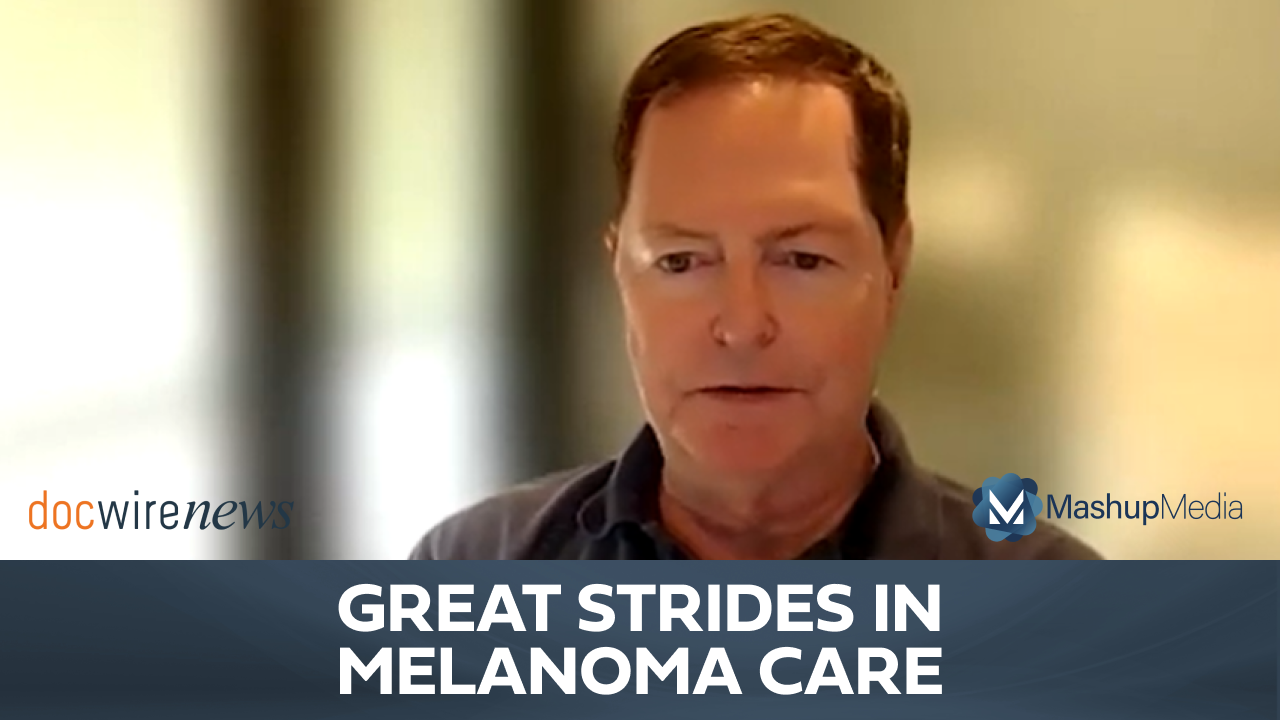Lori Parisi, Janssen Oncology, Discusses a Treatment for Mantle Cell Lymphoma
By Rob Dillard - Last Updated: April 27, 2023DocWire News spoke with Lori Parisi, Senior Global Medical Affairs Leader, Ibrutinib, Janssen Oncology, to discuss the promising results of the SHINE study, which demonstrated that ibrutinib in combination with chemo immunotherapy can benefit patients with mantle cell lymphoma.
DocWire News: Can you provide us with some background on yourself, and your role at Janssen?
Lori Parisi: Yes. Hi, thank you. I’m very happy to be here. My name is Lori Parisi. I am the senior global medical affairs lead for ibrutinib at Janssen Oncology.
Talk to us about mantle cell lymphoma – how prevalent is it, and what’s the current prognosis?
Yes, so mantle cell lymphoma is a subtype of B cell non-Hodgkin lymphoma, that’s considered rare and incurable. There are, in the United States, I believe about three to 5,000 patients diagnosed annually. Again, so it’s on the rare side. The overall survival historically with mantle cell lymphoma has been on the order of eight to 10 years, but I think you’ll see when we start discussing the results from the SHINE study and with the advent in the last decade of BTK inhibitors and some other therapies that we are looking at a much longer and better prognosis for many of these patients. Younger patients with mantle cell lymphoma typically receive aggressive treatment with high dose chemo immunotherapy followed by autologous stem cell transplant.
Whereas the majority of patients are elderly and if they’re less physically fit they’re typically treated with a less aggressive chemo immunotherapy regimen and elderly patients in general do have shorter overall survival than younger patients and this is why the SHINE study was designed specifically for this study population with a high unmet need.
Talk to us about the SHINE study. How was it conducted?
So over the last several years in this elderly population bendamustine-rituximab has become the most commonly used frontline regimen. Basically on its tolerability profile and a study that showed it had a progression free survival advantage over R-CHOP which is another commonly used chemo immunotherapy regimen. Ibrutinib is the first in a class of oral treatments called Bruton Tyrosine Kinase inhibitors or BTKis. It has really transformed the care of patients particularly in the relapse refractory mantle cell lymphoma setting with its durable activity, particularly when it’s used at first relapse.
The SHINE study is an international phase three randomized double blind placebo controlled trial in the 523 patients. It’s the first test in the phase three setting of a BTK inhibitor, namely ibrutinib, in the frontline mantle cell setting and the study population was specifically patients who were 65 years of age or older and who were not planned to receive an auto stem cell transplant. In this study all of the patients received background therapy with bendamustine-rituximab chemo immunotherapy, given for an of induction of six cycles plus rituximab maintenance for another two years. And then on top of that patients were randomized in a one to one fashion to receive either daily ibrutinib or daily placebo and those were both given until disease progression or intolerance. And the primary endpoint of the SHINE study was investigator assessed progression free survival, and we also had secondary endpoints related to safety and other efficacy related outcomes like response rate, overall survival and time to next treatment.
What were the results?
So, first of all I’d like to say that the primary findings of the SHINE study were recently presented by Dr. Michael Wong of MD Anderson at both ASCO and EHA this year and in early June they were published online in the New England Journal of Medicine so the full study findings can be found there. In the SHINE study the median age in this elderly population with 71 years with some patients up to age 87. The median study follow up at the time of the primary analysis was seven years so these are very mature data even at the primary study readout. Essentially SHINE is the first phase three study demonstrating that ibrutinib in combination with chemo immunotherapy, namely bendamustine-rituximab with rituximab maintenance is highly effective in patients with untreated MCL and I’ll elaborate a bit more on the study findings. So the study’s primary endpoint was positive.
The addition of ibrutinib to the background therapy significantly improved progression free survival versus the placebo with a hazard ratio of 0.75 and that essentially translate to a 25% reduction in the risk of disease progression or death versus this very robust standard of care comparator arm. In terms of median PFS, the addition of ibrutinib improved median PFS by 50% versus placebo. This led to a median progression-free survival of 81 months or 6.7 years for the ibrutinib arm versus 53 months or 4.4 years in the placebo arm. So this is a statistically significant result and led to a clinically meaningful difference of 2.3 years, in terms of median progression free survival in the frontline setting. This PFS benefit was seen across most of the pre-specified subgroups. And in terms of some of the other efficacy endpoints ibrutinib also improved time to next treatment, which is an important efficacy parameter in the clinical practice setting, improved time to next treatment versus placebo and numerically increased the complete response rate.
In this study the overall survival at the time of the primary readout was similar between the arms. In terms of safety the adverse events seen in the study were consistent with what we already know about single agent ibrutinib and bendamustine and rituximab keeping in mind that in this study ibrutinib was added to the background chemo immunotherapy regimen. If we look at some of the trends in terms of adverse events, infections and particularly pneumonia were seen to a similar extent in that in both arms in that first six months of the induction treatment, but the rate in the maintenance period was higher in the ibrutinib group, and overall more patients in the study discontinued ibrutinib due to an adverse event and those were predominantly due to infections versus the placebo arm. To put those data in context bendamustine which was in the background regimen can lead to prolonged lymphocytopenias even after treatment and rituximab is also so associated with a risk of infection.
So it appears that the addition of a BTK inhibitor with its own infection risk did increase the risk of infections overall in this study. So I think the data just really emphasized the need for patients or physicians to be vigilant during treatment to ensure they can identify and manage these infections early since elderly patients remain vulnerable in general. So in the end the collective results of the SHINE study support really the potential for this ibrutinib combination treatment to serve as a new benchmark in frontline treatment for these older patients with mantle cell lymphoma.
What were the study limitations?
Yes. So as I mentioned, the comparator arm here was bendamustine-rituximab. So while over the last several years it has evolved to become the most commonly used treatment in these elderly patients it’s not the only treatment used, especially if we think about a global context. So other frontline treatments can be driven by local market access or sometimes particular patient comorbidities. So I do think one limitation is that the SHINE study doesn’t provide any information, I guess, on what might be the clinical profile if you combined ibrutinib with another type of chemo immunotherapy, or if you compared it to another type of chemo immunotherapy. However, we do know from looking at the literature, and this is discussed in the paper that the median PFS for some of these other regimens, other than bendamustine-rituximab and those include things like BR, I’m sorry, R-CHOP, R-CVP. The medium PFS in the setting can be quite short and in some studies it has ranged from one and a half to three and a half years.
So while we don’t have a direct comparison here, I guess you could think that the ibrutinib plus BR combination with its median PFS of 6.7 years appears to be quite a bit longer than what you might see with some of these other frontline treatment choices. And the second thing that jumps out to me I think, and we’ve heard questions already on this circulating in the medical community is whether these data do support whether it’s better to combine ibrutinib and bendamustine-rituximab in the frontline setting, or to sequence these two effective treatments, essentially using bendamustine-rituximab in the frontline, and then treating with ibrutinib at relapse where it is currently indicated today. First, I will say that the SHINE study was not designed to answer this question. There are patients in the control arm who received bendamustine-rituximab with rituximab maintenance who went on to receive ibrutinib or another BTK inhibitor at the time of first relapse, but it wasn’t uniform across this study so it’s a bit difficult I think to conclude too much from those analyses because they’re exploratory at this time.
And again, the study wasn’t powered really to look at this question of combining versus sequencing, but given some of the shorter PFS times that I just quoted for some of these other chemo immunotherapy regimens, given the PFS advantage we see here with adding ibrutinib to bendamustine-rituximab, and given that mantle cell lymphoma tends to become much more aggressive and more difficult to treat. Once patients ultimately start to relapse this in mind setting really might provide patients with their best opportunity for durable disease control and help to either prevent or delay that ultimate relapse. And we also know that not all patients in mantle cell lymphoma go on to get a second line therapy because of the aggressive nature of the disease.
What are the key takeaways of the SHINE study?
And so I think I want to start with the background that more effective treatment options have been needed for these older patients, primarily because they’re not eligible for the most aggressive options we have today and not everything is on the table for them. So I think first as kind of a side note of the study, SHINE further confirmed the role of rituximab maintenance in this population, but for the ibrutinib arm specifically SHINE is the first phase three study supporting that ibrutinib can be used in combination with chemo immunotherapy as a highly effective frontline treatment for older patients who are unsuitable for stem cell transplants. The data, if you look at it all together, really demonstrate that it was feasible to deliver this regimen in the average older patient and that can be a challenge with studies in elderly. And it also showed that the treatment strategy was beneficial.
So the median PFS of 6.7 years seen with this combination was significantly longer than the control arm, which itself was a very robust comparator I might add, but also substantially longer than we have seen in other studies of other frontline chemo immunotherapy regimens that are typically used in these older patients. So in that sense the improvement in PFS that was seen in the study was clearly statistically significant. We saw that with the primary endpoint, but also clinically meaningful. So again, this combination may really give patients who are elderly and have more limited treatment options their best opportunity for durable disease control in the frontline setting and help them to prolong that time to the initial relapse, where we know that an aggressive cancer like mantle cell lymphoma just becomes that much more difficult to treat.







 © 2025 Mashup Media, LLC, a Formedics Property. All Rights Reserved.
© 2025 Mashup Media, LLC, a Formedics Property. All Rights Reserved.